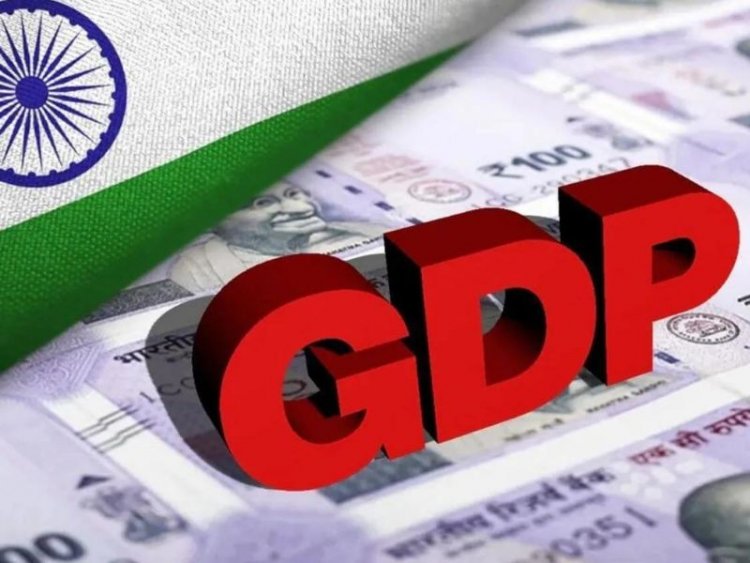India's economy to grow at 6.3pc in FY24: World Bank
Despite global headwinds, the World Bank has retained India's growth forecast at 6.3 per cent for current financial year, thanks to robust services activities. India continues to show resilience against the backdrop of a challenging global environment, says a latest report of the World Bank.

Despite global headwinds, the World Bank has retained India's growth forecast at 6.3 per cent for current financial year, thanks to robust services activities. India continues to show resilience against the backdrop of a challenging global environment, says a latest report of the World Bank.
Sharing sectoral growth projections, the World Bank report said the agriculture sector is expected to clock a growth of 3.5 per cent, industry 5.7 per cent and services 7.4 per cent during 2023-24. At the same time, investment growth is projected to remain robust at 8.9 per cent. In India, which accounts for the bulk of South Asia region, the growth is expected to remain robust at 6.3 per cent in 2023-24, India Development Update of the World Bank said. The World Bank had projected 6.3 per cent GDP growth in its April report as well. India recorded 7.2 per cent growth in 2022-23.
As per RBI's latest forecast, the Indian economy would grow at 6.5 per cent in 2023-24. Last month, Asian Development Bank (ADB) marginally lowered India's growth forecast to 6.3 per cent for current financial year. The Organisation for Economic Cooperation and Development (OECD) in its latest report upped the GDP growth projection for India to 6.3 per cent from the previous estimate of 6 per cent. While global rating agency Fitch retained India's growth forecast at 6.3 per cent, S&P Global Market Intelligence raised it to 6.6 per cent from the earlier projection of 5.9 per cent.
"An adverse global environment will continue to pose challenges in the short term. Tapping public spending that crowds in more private investments will create more favourable conditions for India to seize global opportunities in the future and thus achieve higher growth," said Auguste Tano Kouame, World Bank's Country Director in India.
On inflation, the report said, it is expected to decrease gradually as food prices normalise and government measures help increase the supply of key commodities. Retail inflation is expected to remain elevated at 5.9 per cent during the year, it said.
The World Bank expects fiscal consolidation to continue in FY24 with the central government's fiscal deficit projected to decline from 6.4 per cent to 5.9 per cent of GDP. "Public debt is expected to stabilize at 83 per cent of GDP. On the external front, the current account deficit is expected to narrow to 1.4 per cent of GDP, and it will be adequately financed by foreign investment flows and supported by large foreign reserves," it said.
The report also said the asset quality of scheduled commercial banks (SCBs) continue to improve, driven by higher loan growth, decline in slippages, better recoveries and write-offs of bad loans. Gross non-performing assets of SCBs as a ratio of gross advances reached its lowest level in a decade to 3.9 per cent as of March 2023 compared to 5.9 per cent in March 2022, it said.
The World Bank said South Asia is expected to grow 5.8 per cent this year higher than any other developing country region in the world, but slower than its pre-pandemic pace and not fast enough to meet its development goals. As compared to the earlier forecast, growth in 2023 has been upgraded by 0.2 percentage points due to stronger-than-expected data in India.
Although India's post-pandemic economic rebound is now fading, growth is expected to remain stronger than in other large emerging market and developing economies (EMDEs). Output is forecast to grow 6.3 per cent in FY2023-24 and 6.4 per cent in FY2024-25 roughly equal to the estimated pace of India's potential growth, the World Bank said. It said that in India, robust output growth in the first half of 2023 was supported by a strong expansion of investment and, on a sectoral level, continued strength of services. Government infrastructure projects have supported momentum in the construction sector, which has grown at year-over-year rates of around 10 per cent in recent quarters.
In India, inflation was trending below the upper bound of the inflation target range before a disruptive monsoon caused a substantial recent increase in food prices, the report noted. To counter this, the government has implemented an export ban on most types of rice. The Reserve Bank of India increased interest rates substantially last year, and has kept them steady since this February.
According to the bank, in India, the financial sector has shown few signs of strain. Bank balance sheets and corporate leverage ratios have improved substantially in recent years. The current account deficit has been predominantly financed by foreign portfolio investment and remittances. Foreign exchange reserves are at a healthy level, while the currency has alternated between periods of stability and mild depreciation. Non-performing loans in the banking sector are low.



 Join the RuralVoice whatsapp group
Join the RuralVoice whatsapp group









































